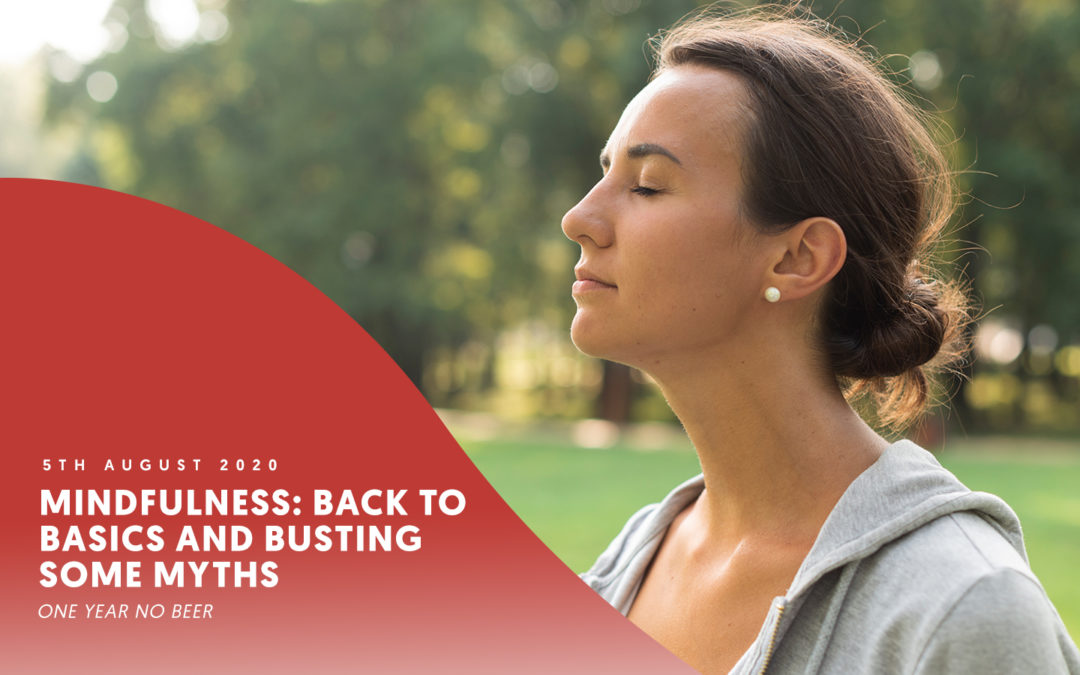What does being mindful really mean, what is it, and most importantly, what is it not?
With an increasing awareness about mental health and the importance of preserving and protecting our minds from the stresses of busy everyday lives, mindfulness as a concept has gained a bit of attention. But what does it actually mean to be mindful?
Mindfulness myths:
- Mindfulness is meditation
- Mindfulness is about taking time out to rest and relax
- Mindfulness is having no thoughts
- The ultimate goal is to be mindful all the time
- Mindfulness is bliss
What is mindfulness?
It may sound straightforward, easy, something we do unconsciously on a daily basis. But that is kind of the point… it is making this process something conscious so that we can utilise it as a tool.
In a world where we are constantly overstimulated and exposed to noises, sounds, smells and more, it is easy to forget to take note of the little things. Whenever you bring your attention to your senses, and what you experience through each individually or through all of them collectively, you’re being mindful. Growing research suggests that practising mindfulness remodels the structure of your brain, increasing cortical thickness in the hippocampus, which controls the brain's learning and memory, and other areas of the brain that regulate emotion and self-referential processing.
“It's easy to stop noticing the world around us. It's also easy to lose touch with the way our bodies are feeling and to end up living ‘in our heads' – caught up in our thoughts without stopping to notice how those thoughts are driving our emotions and behaviour. An important part of mindfulness is reconnecting with our bodies and the sensations they experience. This means waking up to the sights, sounds, smells and tastes of the present moment.”
Professor Mark Williams
We have developed our own beginners mindfulness course, if you are interested you can find out all about it here.
The benefits of mindfulness
Studies conducted into mindfulness and its benefits found evidence pointing to mindfulness being effective in reducing anxiety, as practising mindfulness decreases in brain cell volume in the amygdala, which is responsible for fear, anxiety, and stress. Participants also reported they felt less stressed and anxious following the mindful practise which suggests this extends to changing the perceptions of each subject as well as their physical brains. Other studies have shown that mindfulness can have a positive impact on improving concentration levels, relieving depressive symptoms, and even positively influencing the preservation of the brain as it ages with increased retention of grey matter over time.
It seems incredible that such a simple practice could lead to such amazing results – all the more reason to take a little time for yourself each day to reconnect with your body and mind.
Mindfulness myths
Just as important to understanding what mindfulness is, is understanding what mindfulness isn’t. It is not some magical cure-all practise that can offer you all your hopes and dreams, rather, it’s a fundamental human action that over time has been forgotten and overlooked. There are a number of misconceptions about mindfulness, and we are here to bust some of these in order to understand how we can expect mindfulness to work for us.
Myth 1: Mindfulness is meditation


Myth 2: Mindfulness is about taking time out to rest and relax
Mindfulness, whilst often having the positive side effect of being relaxing and relieving stress, is not about relaxation. It is not about taking a seat somewhere and switching off, rather it is about taking notice. If anything, beginning mindfulness practises can be hard work as it requires you to remember to be mindful.
Myth 3: Mindfulness is having no thoughts
Similarly to the misconception about meditation being about clearing your mind completely, mindfulness is often mistaken as the practice of having no thoughts. Instead, meditation is often about observing your thoughts, and mindfulness is about noticing each little thing as it happens. Your brain is going to think, just as your heart is going to beat.
Myth 4: The ultimate goal is to be mindful all the time
You do not need to try to be mindful every moment of every day, this is not realistic nor is it necessary (not to mention, exhausting!). There will be times when you need to reflect on the past, and look to the future to make plans and thus you cannot be mindfully in the present. All it takes to be mindful is a few seconds, maybe minutes, and it doesn’t have to be every day – just a few moments a week to check in with yourself is as much of a commitment as you need to make.
Myth 5: Mindfulness is bliss
Don’t get me wrong, being mindful can be blissful, but that is not all it is. You may find bliss in noticing all the individual colours in the sky, or savouring the feeling of the first sip of tea in the morning, but being mindful isn’t about finding bliss. You can be mindful about things that are negative too – or something completely neutral. It can be the mundane, or the exciting. It can be observing your anger or passion about something. Even noticing something that causes you pain in order to better understand yourself and connect to your body and mind as a whole.
How can you start being mindful in day to day life?
As discussed above, being mindful doesn’t require a whole load of time and preparation, so incorporating it into your daily life doesn’t take a whole lot of thought. Initially, you may have to remind yourself to get into the habit of checking in, but soon it will become something that comes more naturally. Take a second now as you read this to notice your surroundings. Are you standing or seated? What points of your body are touching a surface? Take a scan from the top of your head, through each body part, until you reach your toes – how do you feel? See, that wasn’t too difficult, and now you’re on your way to being a mindfulness maestro.



An entrepreneur and former senior oil broker, Ruari gave up drinking after excessive consumption almost cost him his marriage, and worse, his life. Going alcohol-free improved his relationships, career and energy levels, leading to him founding OYNB to provide a support network for others.







